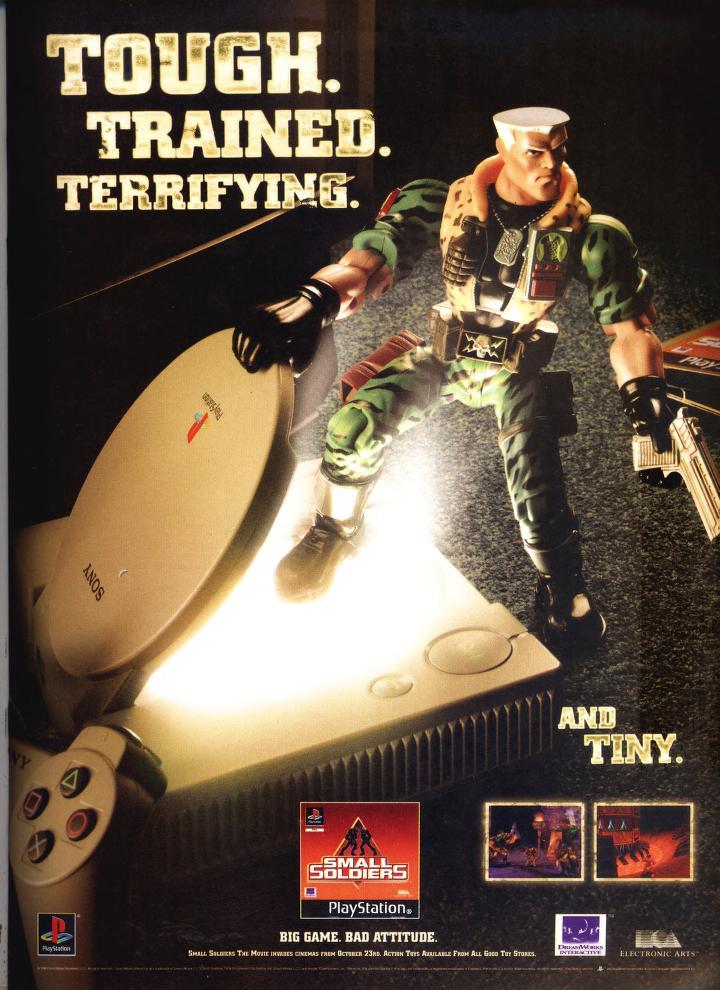

On top of having played one of the less liked releases, I’ve also seen one of the first self-titled film adaptations (2006, directed by Christoph Gans, Davis Films, Konami) but I don’t remember much about it today.
#Small soldiers game for open emu series
All in all, Homecoming still stands closer to its original than the path its sibling series of the same genre realm, Resident Evil, took with its sixth instalment. I would respect the parts this entry got right in its own way, an oppressing and claustrophobic crawl through the foggy streets of a small town detached from reality, twisted characters and monsters, some puzzle elements to progress through it. Strangely enough, I did play one of its sequels soon after it came out, Homecoming, produced by Western studio Double Helix Games and released in 2008, an entry that was decently received but still only marked a further downturn from the original’s foundation (as summarised in rambling detail by an episode of Ben “Yahtzee” Croshaw’s Zero Punctuation at the time). Free-floating in my head were many impressions of what the series was like, though via generational circumstance, I only came to know it long after the title made its remarkable entry into the survival horror landscape it itself helped carve out. I knew its reputation, loved how it looked, its environments, and knew I wanted to do something just like it. One title specifically kept creeping back into my mind while we were still discussing if the game would even be built in three dimensions at all. Some styles are more indigent than others - borrowing the visuals of older console generations, even going as far back as to the style of text adventures like The Hitchhiker's Guide to the Galaxy (1984, Infocom) is back on the table.

The goal here was to elect a general style that would be able to stage the virtual environment we had in mind, something that could carry and envelop the story taking place there, yet also something that would allow us to stay within the self-evident limits on time and planned project size.Ī picture that formed early on was most probably directed by the recent recurrence of retro graphics in the small titles spawned from various game jams and successful independent releases, most of which are 2D, though a few entries into 3D can also be named there was the cult-and-occult-themed Dusk (2018, David Szymanski, New Blood Interactive), the randomly generated, woman-powered Nightmare Reaper (2019, Blazing Bit Games), the highly acclaimed mystery puzzle Return of the Obra Dinn (2019, Lucas Pope, 3909 LLC), also worthy of note, the accessible VR dungeon crawler COMPOUND (2018, Bevan McKechnie).

What also had to come together in the line-up of creative decisions after the initial talks was the game’s visual presentation. To be prepared for the development side of all this and make the first steps towards a prototype, I plunged into Unity and tried to determine how much general coding expertise I could transfer over to C#, a language I had heard a lot about but never wrote a single line of. Even if Rebirth failed on that day to be a compelling horror experience to play together in a voice call at night, credit can still be passed along to Frictional as sources of inspiration, having previously created SOMA as their official 2015 return to self-developed horror titles ever since the original Amnesia: The Dark Descent in 2010, all of which are excellent inspirations to what makes modern horror. It was a philosophical concept first that was sculpted more and more into something game-mechanical, something with a setting and a mode of exploration.

Me and a good friend of mine were in an evening session playing Amnesia: Rebirth by Swedish studio Frictional Games, then completely stuck on a weirdly designed puzzle in what seemed like a spacious underground ritual chamber, idly hopping around from pedestal to pedestal and becoming progressively distracted by this new thing. This has all been kicked off by a new interactive project that began with an initial idea spark towards the start of pandemic+1, the year of 2021. I’ve recently started getting into Unity, a popular game engine widely used across the ever-expanding landscape of independent game development.


 0 kommentar(er)
0 kommentar(er)
